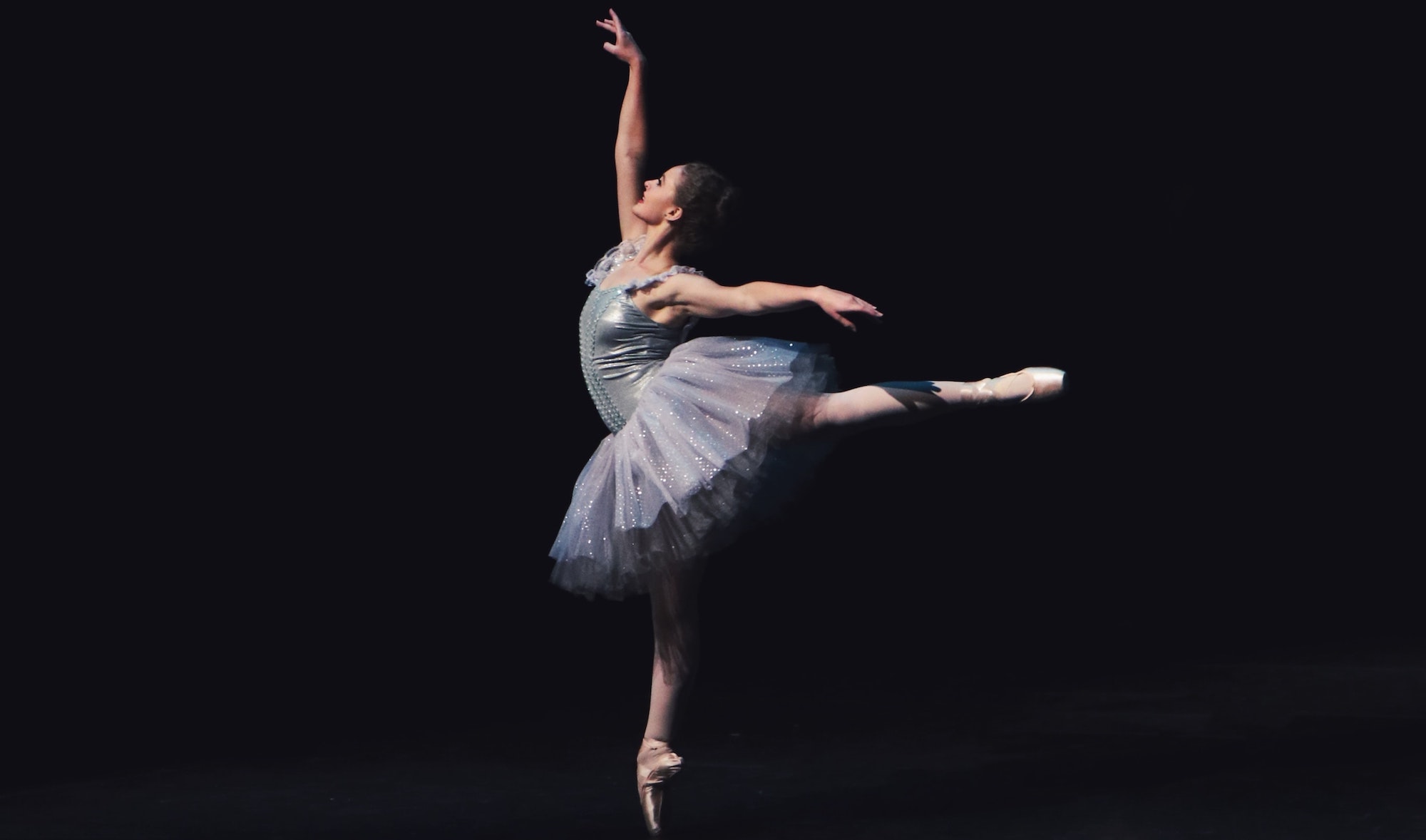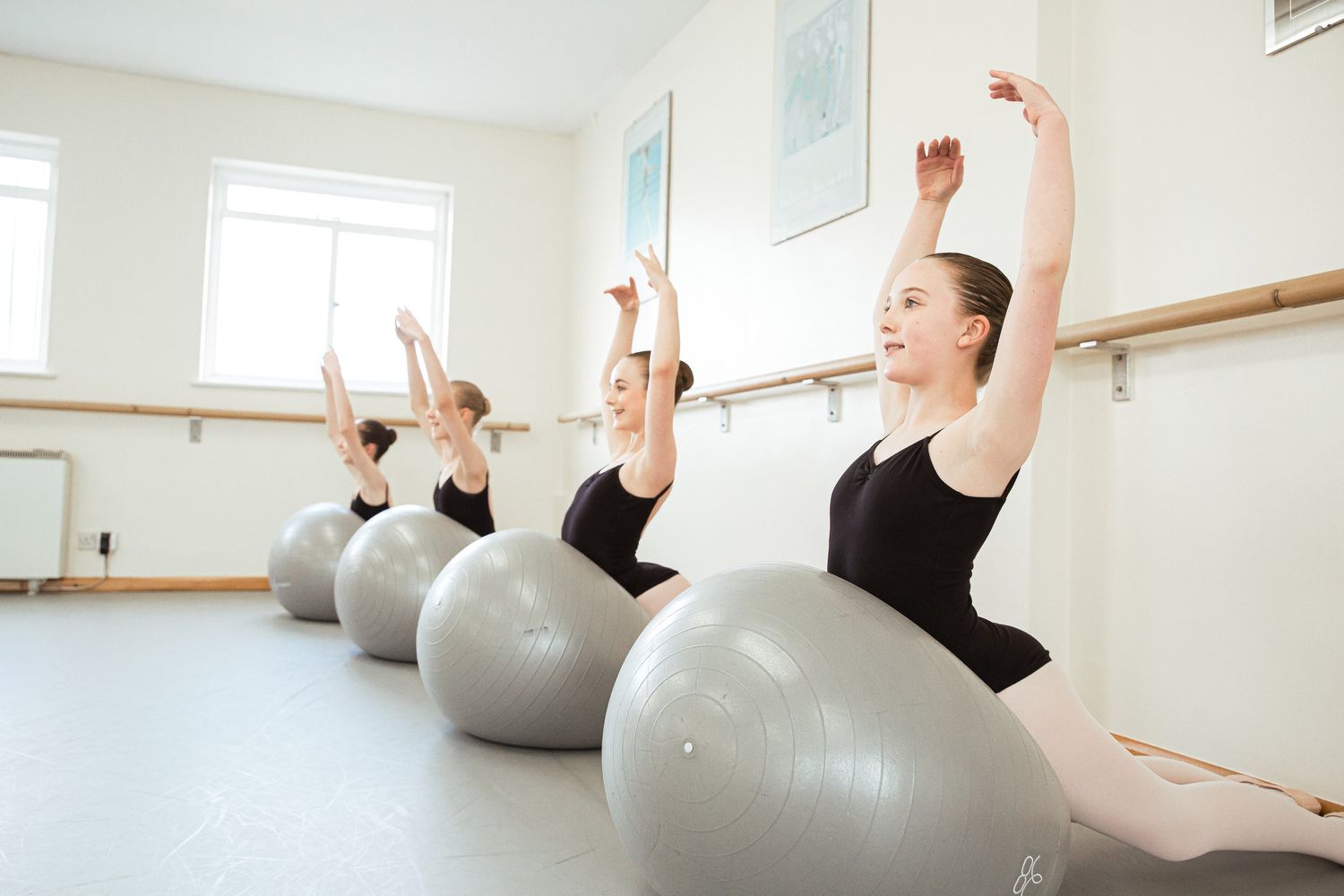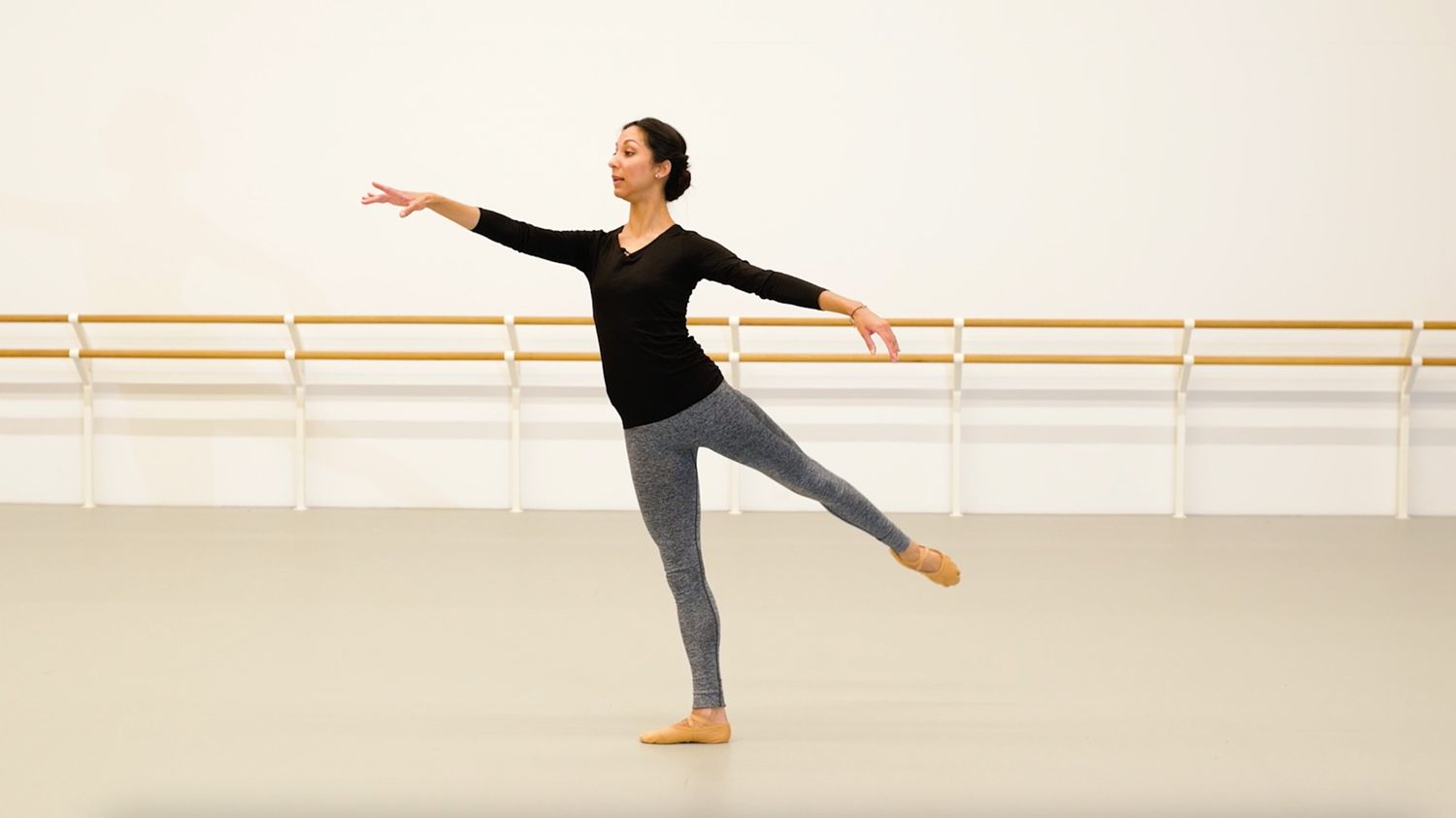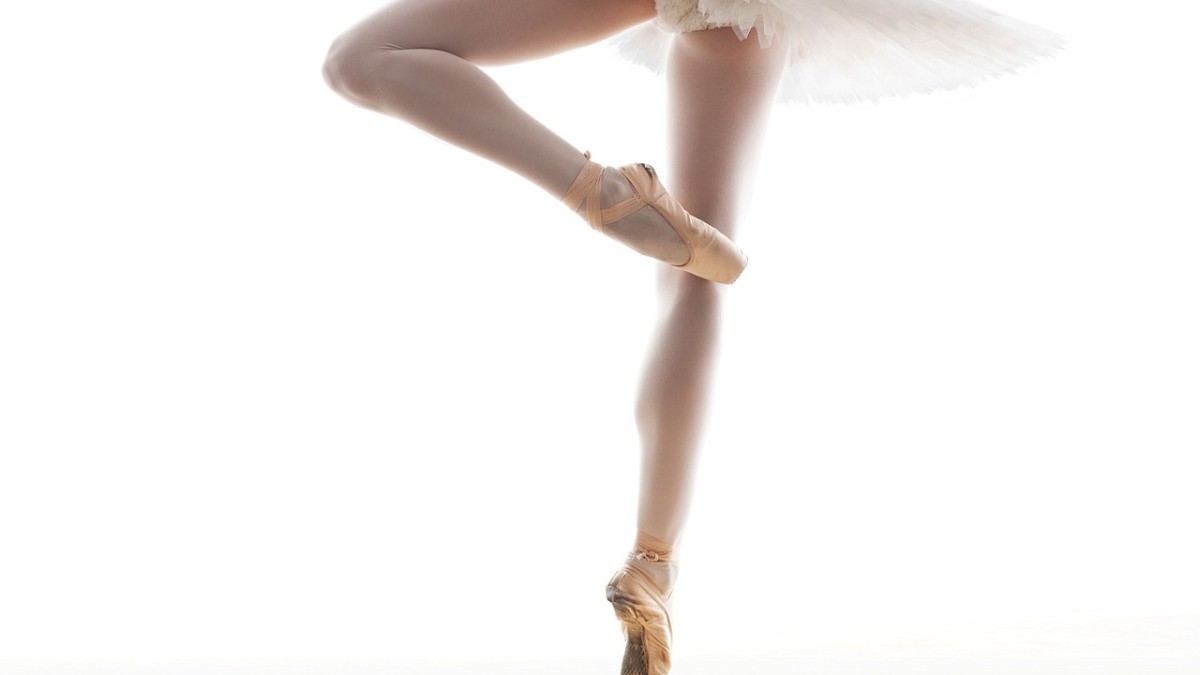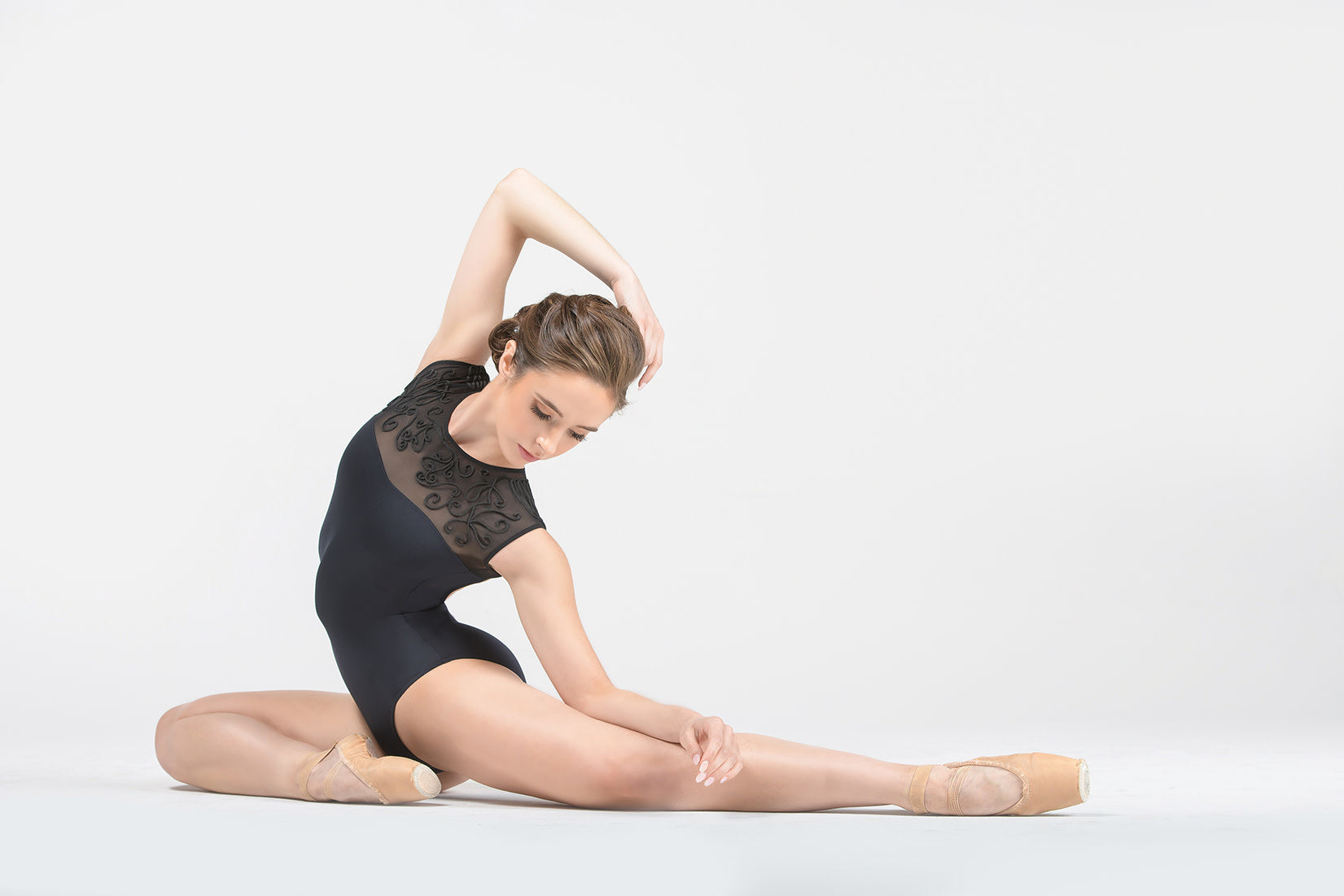Home>Events & Info>Ballet>What Is A Variation In Ballet
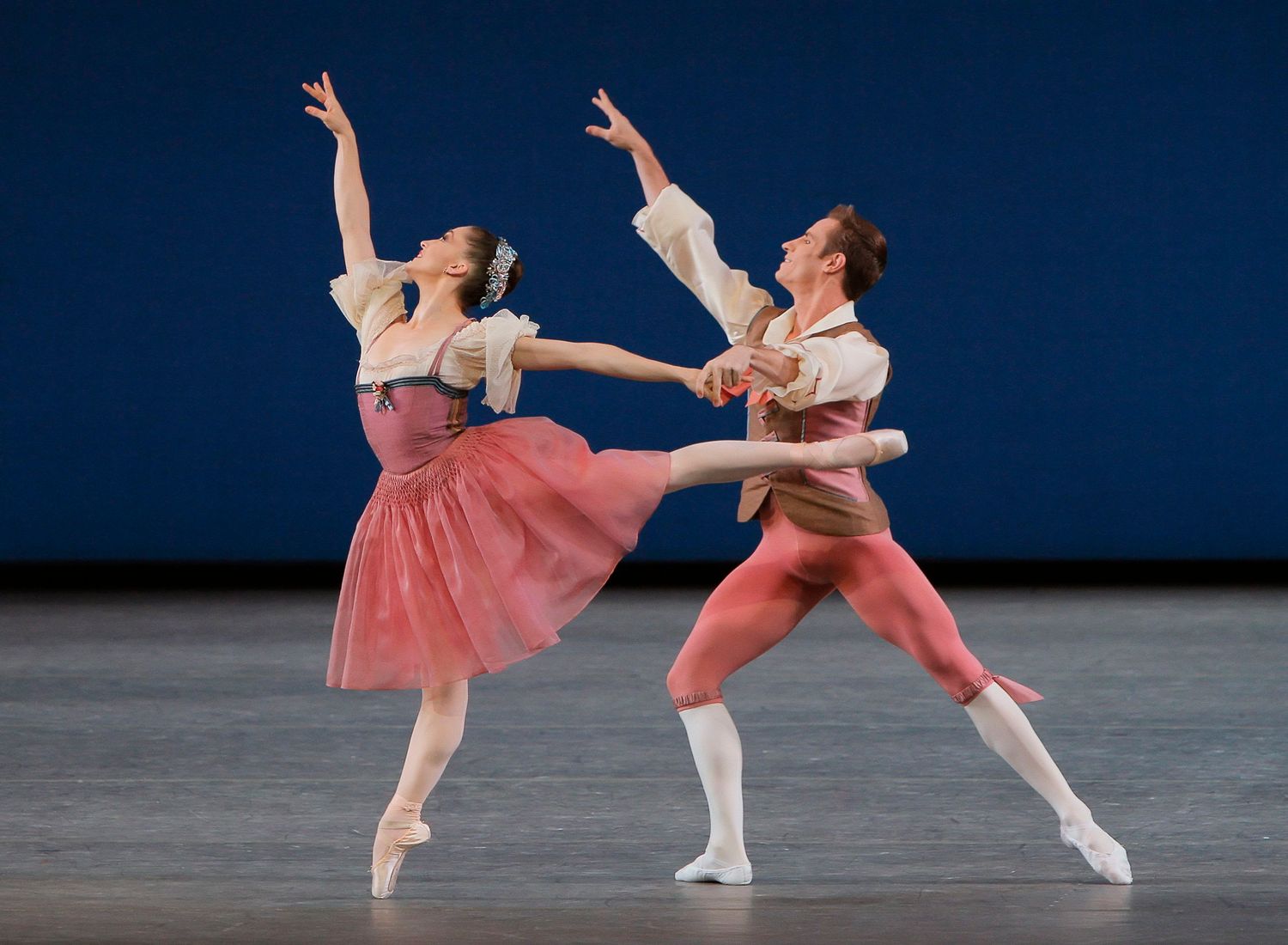

Ballet
What Is A Variation In Ballet
Published: January 8, 2024
Discover the beauty and intricacies of ballet variations. Understand what a variation in ballet is and how it contributes to the art of dance.
(Many of the links in this article redirect to a specific reviewed product. Your purchase of these products through affiliate links helps to generate commission for AudioLover.com, at no extra cost. Learn more)
Table of Contents
- Introduction
- Definition of Variation in Ballet
- Historical Significance of Variations
- Purpose of Variations in Ballet
- Elements of Variation
- Famous Variations in Ballet
- Training and Preparation for Variations
- Executing a Variation
- Role of Variation in Ballet Competitions
- Evolution of Variations in Modern Ballet
- Conclusion
Introduction
Ballet, an art form known for its grace, beauty, and discipline, has captivated audiences for centuries. Within the realm of ballet, there are various elements that make a performance truly captivating, and one such element is the variation. Variations are an integral part of ballet repertoire, adding depth and complexity to a dancer’s skillset and providing opportunities for individual artistry.
Derived from the French word “variation,” which means “change” or “alteration,” variations are solo dances within a larger ballet production. They showcase the technical prowess, artistry, and creativity of a dancer, allowing them to shine center stage and display their unique style. Variations serve as a crucial component of ballet performances, often highlighting the virtuosity, precision, and expressiveness of a dancer’s technique.
From the classical ballets of the 19th century to the contemporary works of today, variations have played a significant role in the development and evolution of ballet as an art form. They provide moments of individual expression, enabling dancers to demonstrate their technical abilities and interpretative skills. Whether it’s performing the iconic solo of the Sugar Plum Fairy in “The Nutcracker” or the challenging Black Swan Variation from “Swan Lake,” variations offer an opportunity for dancers to leave a lasting impression on audiences.
In this article, we will explore the definition, historical significance, purpose, elements, and execution of variations in ballet. We will delve into famous variations, discuss the training and preparation required to perform them, and examine the role of variations in ballet competitions. Furthermore, we will examine how variations have evolved in modern ballet, reflecting the changing trends and innovations within the art form.
So, let us embark on a journey into the captivating world of ballet variations, where technique, artistry, and individuality come together in spectacular performances.
Definition of Variation in Ballet
In the world of ballet, a variation refers to a solo dance, typically performed within a larger ballet production. It is a showcase of the dancer’s individual artistry and technical abilities. Variations typically exhibit a specific theme or character and provide an opportunity for the dancer to demonstrate their skills through a series of choreographed movements.
Each variation is carefully crafted to highlight the strengths of the dancer, whether it be their virtuosity, flexibility, or storytelling abilities. Variations can range in duration, complexity, and style, depending on the ballet and the choreographer’s vision. They often incorporate intricate footwork, challenging turns, jumps, and expressive movements that require precision, control, and grace.
The musical accompaniment for a variation is usually a distinct piece of music, specifically composed or selected to complement the movements and enhance the overall performance. This music sets the rhythm and pace for the dancer, guiding their movements and allowing them to synchronize their steps with the melodies and harmonies.
Variations are an essential part of the ballet repertoire, showcasing the technical proficiency and artistry of the dancer. They also contribute to the narrative of the ballet, providing moments of individual expression and character development. Each variation contributes to the overall storyline, adding depth and complexity to the performance as a whole.
Furthermore, variations offer a glimpse into the cultural and historical context of the ballet. They can reflect the time period, the social expectations, and the traditions of the era in which the ballet was created. Variations often embody the essence of a specific character or theme, allowing the dancer to embody the emotions, mannerisms, and gestures associated with that particular role.
Overall, variations are an integral part of ballet, allowing dancers to showcase their technical prowess, artistry, and individuality. These solo dances are a testament to the skill and dedication of the dancer and enrich the overall ballet experience for performers and audiences alike.
Historical Significance of Variations
Variations in ballet have a rich historical significance, dating back to the origins of the art form. The inclusion of variations in ballet repertoire can be traced to the development of court dances in the 17th century, where solo dances were performed as entertainment for noble audiences.
During the reign of Louis XIV in France, ballet emerged as a popular form of entertainment. Variations were an important element of the grand ballets performed at the royal court. These variations showcased the technical skill and virtuosity of the dancers, often incorporating elaborate footwork, jumps, and turns to impress the audiences.
Furthermore, variations played a significant role in the development of the Romantic era of ballet in the 19th century. This period marked a shift towards more expressive and emotional storytelling, with variations becoming an integral component of narrative ballets. Dancers would portray characters, such as princesses, fairy tale heroines, or mythical creatures, through their variations, adding depth and personality to the overall performance.
Famous ballets such as “Giselle,” “Swan Lake,” and “The Sleeping Beauty” showcased variations that became iconic and synonymous with the characters they represented. These variations allowed ballet dancers to embody the roles and captivate audiences with their technical prowess and emotive interpretation.
In addition, variations also became an avenue for ballet dancers to establish their individual artistry and gain recognition. Famous ballet dancers like Marie Taglioni, Anna Pavlova, and Vaslav Nijinsky became renowned for their virtuosic variations, pushing the boundaries of technical possibilities in ballet and leaving a lasting impact on the art form.
The historical significance of variations extends beyond ballet performances themselves. Variations have been passed down through generations of ballet dancers, with each generation adding their own interpretations and nuances to the choreography. This preservation of variations ensures that the legacy of ballet continues to thrive, connecting dancers of the present to the rich history and traditions of the past.
Overall, variations hold a special place in the historical development of ballet, reflecting the evolution of choreographic styles, storytelling techniques, and technical advancements in the art form. They showcase the beauty, skill, and creativity of ballet dancers throughout the ages and serve as a testament to the enduring allure and significance of ballet as an art form.
Purpose of Variations in Ballet
Variations in ballet serve several important purposes that contribute to the overall artistry and impact of a ballet performance. These purposes include showcasing the technical abilities of the dancer, expressing individual artistry, enhancing storytelling, and creating memorable moments for the audience.
One of the primary purposes of variations is to highlight the technical proficiency of the dancer. Variations often incorporate complex footwork, intricate turns, and demanding jumps that require precision, strength, and flexibility. By performing these challenging movements flawlessly, dancers demonstrate their mastery of ballet technique and captivate audiences with their skill and control.
Furthermore, variations provide a platform for dancers to express their individual artistry. Each dancer possesses a unique style, personality, and interpretative ability, and variations allow them to showcase these qualities. Dancers have the freedom to infuse their variations with their own artistic choices, adding their personal touch to the choreography and bringing the character to life through their portrayal.
Variations also play a vital role in enhancing storytelling within the ballet. They allow for moments of character development, where dancers can convey the emotions, motivations, and struggles of their assigned roles. Variations can represent pivotal points in a story, highlighting the growth or transformation of a character, and adding depth and nuance to the overall narrative arc of the ballet.
Additionally, variations create memorable moments for the audience. These solo dances often involve impressive displays of technical prowess, such as multiple pirouettes, high extensions, or breathtaking leaps. These virtuosic feats leave a lasting impact on viewers, eliciting awe and admiration for the skill and artistry of the dancer. Variations often become iconic within the ballet repertoire, becoming synonymous with certain characters or ballets.
Another purpose of variations is to challenge and inspire dancers to continue pushing the boundaries of their abilities. The technical demands of variations require continual training and refinement, motivating dancers to strive for excellence and reach their full potential. Variations provide an opportunity for dancers to set goals, overcome obstacles, and experience personal growth in their craft.
Overall, the purpose of variations in ballet extends beyond showcasing technical prowess. They allow dancers to express their individuality, contribute to storytelling, create memorable moments, and inspire artistic growth. Variations are a vital component of ballet repertoire that adds depth, complexity, and beauty to the overall ballet experience for performers and audiences alike.
Elements of Variation
Variations in ballet encompass a variety of elements that contribute to their beauty, complexity, and impact. These elements include musicality, choreography, technical proficiency, artistry, and character portrayal.
One of the fundamental elements of a variation is musicality. Dancers must have a deep understanding of the music accompanying the variation and be able to synchronize their movements with the rhythms, melodies, and dynamics of the music. Musicality adds depth and nuance to the performance, allowing dancers to create a seamless connection between their movements and the music.
The choreography of a variation is carefully crafted to highlight the technical abilities and artistry of the dancer. It often incorporates a range of ballet steps, such as grand allegro movements, pirouettes, intricate footwork, and expressive gestures. Choreographers strive to create a balance between showcasing the dancer’s technical prowess and allowing room for individual interpretation and expression.
Technical proficiency is a crucial element of variations. Dancers must possess exceptional technique, with a strong foundation in ballet fundamentals such as turnout, alignment, and placement. Variations often require intricate footwork, fast turns, and impressive jumps, demanding precision, control, and a strong sense of balance.
Artistry is another essential element of variations. Dancers must bring their unique style and personality to the choreography, infusing the movements with their own interpretation. Artistry encompasses qualities such as expressiveness, emotional connection, musicality, and the ability to captivate the audience through their presence on stage.
Furthermore, variations often require dancers to embody a specific character or theme. Dancers must understand the nuances and characteristics of the role they are portraying, incorporating appropriate gestures, facial expressions, and body language. This element of character portrayal brings depth and storytelling to the variation, enhancing the overall narrative of the ballet.
Costuming is another element that contributes to the impact of a variation. The costume chosen for a variation should complement the choreography and reflect the character or theme being portrayed. Costumes often include elements such as tutus, flowing skirts, or ornate designs to further enhance the visual and aesthetic appeal of the performance.
Overall, the elements of musicality, choreography, technical proficiency, artistry, character portrayal, and costuming all come together to create a mesmerizing and captivating variation in ballet. Each element contributes to the overall beauty, complexity, and impact of the performance, allowing dancers to showcase their skills, express their individuality, and enchant audiences with their artistry.
Famous Variations in Ballet
Throughout the history of ballet, there have been numerous variations that have become iconic and synonymous with the art form. These variations have captivated audiences and have showcased the skill, artistry, and emotional depth of ballet dancers. Here are just a few examples of famous variations in ballet:
- The Sugar Plum Fairy Variation – From the beloved ballet “The Nutcracker,” this variation is performed by the titular character in the second act. It is a delicate and enchanting solo that showcases graceful movements and balances, often accompanied by the twinkling tones of the celesta.
- The Black Swan Variation – Featured in Act III of “Swan Lake,” this variation is performed by the seductive and manipulative character of Odile. It requires technical virtuosity, including fouetté turns and impressive leaps, as the character tries to deceive the prince.
- The Raymonda Variation – From the ballet “Raymonda,” this variation is known for its intricate footwork and regal quality. It showcases the strength, precision, and poise of the dancer as they execute a series of challenging jumps, turns, and balances.
- The Bluebird Variation – Featured in the ballet “The Sleeping Beauty,” this variation is performed by the male dancer in the third act. Known for its joyful and lively nature, it includes dynamic jumps, multiple pirouettes, and impressive partnering work.
- The Kitri Variation – From the ballet “Don Quixote,” this variation is performed by the fiery and spirited character of Kitri. It is characterized by its vivaciousness, quick footwork, and stunning displays of balance and control.
- The Giselle Variation – Featured in Act I of the ballet “Giselle,” this variation is performed by the innocent and ethereal character of Giselle. It is a delicate and graceful solo that showcases the dancer’s lyricism, lightness, and vulnerability.
These variations, among many others, have become emblematic of the ballets in which they are performed. They require technical expertise, artistic interpretation, and an understanding of the character or themes being portrayed. Dancers who perform these variations leave a lasting impression on audiences, capturing their hearts and evoking a range of emotions.
It is worth noting that variations can be interpreted differently by different dancers, allowing for individual artistry and personal expression. Each dancer brings their unique style and interpretation to the variations they perform, adding their own flair and subtleties to the choreography.
These famous variations continue to be treasured and performed by ballet companies around the world, captivating audiences and showcasing the beauty and brilliance of ballet artistry.
Training and Preparation for Variations
To execute a variation successfully, ballet dancers must undergo intensive training and preparation. The process includes honing technical skills, developing artistry, understanding the character, and rehearsing diligently. Here are some key aspects of training and preparation for variations:
Technical Skills: The foundation of training for variations lies in the mastery of fundamental ballet techniques. Dancers must have strong core stability, proper posture, and excellent control over their movements. They spend years refining their turnout, working on their footwork, perfecting their jumps, and sharpening their turns to meet the technical demands of variations.
Strength and Conditioning: Variations require both physical and mental strength. Dancers undergo rigorous strength and conditioning exercises to develop the muscles necessary for executing the intricate footwork, jumps, and balances. They engage in regular strength training, including exercises such as pliés, relevés, développés, and grand battements to build strength and control.
Artistry and Interpretation: While technical skill is important, artistry is equally crucial in capturing the essence of a variation. Dancers work on expressing the emotions, character traits, and storylines associated with the variation. They focus on musicality, mastering different dynamics, and exploring nuances within the choreography to deliver a captivating interpretation.
Rehearsal Process: Rehearsing for a variation involves countless hours of practice and repetition. Dancers work closely with ballet masters and coaches to refine their technique, refine their artistry, and perfect their timing. They learn the choreography, dissecting each step and movement, and practice them repeatedly to achieve precision and consistency.
Character Study: Understanding the character being portrayed in the variation is crucial for a dancer’s interpretation. Dancers delve into the backstory, motivations, and mannerisms of the character. They may study historical references or seek guidance from coaches to embody the character fully, infusing their performance with authenticity and depth.
Costume and Prop Familiarity: Dancers must also familiarize themselves with the costumes and props associated with a variation. They practice movements and sequences while wearing the costume to ensure comfort and freedom of movement. If a variation involves the use of props, such as a fan or a tambourine, dancers practice incorporating them seamlessly into their performance.
Training and preparation for variations are ongoing processes for ballet dancers. They dedicate themselves to continuous improvement, refining their technique, expanding their range of artistry, and deepening their interpretation. Through countless hours of training and rehearsals, dancers develop the necessary skills and mastery to deliver stunning performances in variations.
Executing a Variation
Executing a variation in ballet requires precision, technical proficiency, artistry, and stage presence. Here are key elements to consider when performing a variation:
- Focus and Concentration: Maintaining focus and concentration is essential throughout the variation. Dancers must stay fully present in the moment, paying attention to their technique, musicality, and the character they are portraying.
- Technical Proficiency: Variations often involve complex footwork, turns, jumps, and balances. Dancers must execute these technical elements with accuracy, control, and strength, showcasing their years of training and honing of their skills.
- Musicality and Rhythm: Dancing in harmony with the music is crucial. Dancers must demonstrate a deep understanding of the musical nuances and accents, using the music as a guide for their movements and timing.
- Artistic Expression: Variations offer an opportunity for dancers to express their artistry and individuality. Dancers should bring their interpretation and emotions into the performance, incorporating subtle nuances, expressive gestures, and fluid movements.
- Grace and Fluidity: Variations require the seamless flow of movements, with an emphasis on maintaining grace and fluidity. Dancers should strive for smooth transitions between steps, creating an illusion of effortlessness.
- Projection: Stage presence and projection are essential in capturing the attention and engaging the audience. Dancers should project confidence, charisma, and passion, connecting with viewers and drawing them into the performance.
- Performance Quality: A successful variation goes beyond executing the steps correctly. Dancers should convey the character’s emotions, intentions, and storyline, captivating the audience and leaving a lasting impact.
- Confidence and Stage Awareness: Confidence is key when performing a variation. Dancers must trust in their training and preparation, exuding self-assurance as they command the stage. They should also be aware of their surroundings, including their positioning, entrances, and exits.
Executing a variation requires a combination of technical prowess, artistic expression, and a deep connection to the music and character. With thorough preparation, attention to detail, and a commitment to delivering a captivating performance, dancers can bring a variation to life on stage, leaving a lasting impression on the audience.
Role of Variation in Ballet Competitions
Variations play a significant role in ballet competitions, where dancers have the opportunity to showcase their technical prowess, artistry, and stage presence. In these highly competitive events, variations serve as a crucial component in evaluating the skill level and potential of dancers. Here are the key roles that variations play in ballet competitions:
- Technical Assessment: Variations provide a platform for judges to assess the technical abilities of the dancers. Competitors must execute complex steps, turns, jumps, and balances with precision, demonstrating their mastery of ballet technique.
- Artistic Expression: Competitions also evaluate dancers’ artistry and ability to convey emotions and storytelling through their variations. Judges look for expressiveness, musicality, and the unique interpretation brought to the choreography.
- Individuality and Style: Variations present an opportunity for dancers to showcase their individuality and personal style. Judges are looking for performers who can bring their authentic selves to the stage and demonstrate their unique qualities as artists.
- Stage Presence: Competitors must exhibit stage presence and command the attention of the audience. They should project confidence, charisma, and an engaging performance quality that captivates the viewers.
- Technical Difficulty: Certain variations chosen for competitions are intentionally challenging to test the dancers’ technical abilities. Judges assess how well dancers handle the demanding aspects of the variation, including intricate footwork, turns, and jumps.
- Performance Quality: Dancers’ overall stage presence and the quality of their performance are key factors in ballet competitions. Judges evaluate the dancers’ connection with the audience, their ability to inhabit the character, and their ability to deliver a captivating and memorable performance.
- Differentiation: Competitions often feature multiple dancers performing the same variation. Judges rely on variations to differentiate between competitors, evaluating their technical execution, artistry, and overall performance to determine the standouts.
In ballet competitions, variations serve as a proving ground for dancers, allowing them to demonstrate their abilities, artistry, and potential. They provide a standardized framework for judges to assess dancers’ technical skills, artistry, and stage presence. Competitors must bring their best performance, exuding confidence, precision, and authenticity to make a lasting impression on the judges and stand out from their peers.
Evolution of Variations in Modern Ballet
The evolution of variations in modern ballet has witnessed a shift in choreographic styles, artistic interpretations, and the inclusion of diverse influences. Modern ballet variations have embraced innovation, pushing boundaries and reflecting the changing trends and artistic visions of the contemporary world. Here are some notable aspects of the evolution of variations in modern ballet:
Exploration of New Movements: Modern ballet has expanded the vocabulary of movement, allowing for the incorporation of non-traditional steps and techniques. Choreographers have experimented with different styles, blending classical ballet with contemporary dance forms, resulting in new and unique variations.
Multidisciplinary Collaborations: Modern ballet has embraced collaborations with various artistic disciplines, such as music, visual arts, and technology. Variations now often incorporate multimedia projections, unconventional music choices, and avant-garde designs, creating immersive and interdisciplinary experiences.
Emphasis on Artistic Expression: Contemporary variations prioritize artistic expression and personal interpretation. Dancers are encouraged to explore their creativity, bringing their own unique voices and perspectives to the choreography. Improvisational elements and moments of freedoCharlotteia* are often incorporated to allow for more organic and spontaneous performances.
Incorporation of Cultural Influences: Modern variations draw inspiration from a myriad of cultures and dance traditions from around the world. Choreographers blend ballet with various ethnic dance styles, merging movements, gestures, and music to create innovative and culturally diverse variations.
Breaking Gender Stereotypes: Modern ballet has challenged traditional gender roles in variations, allowing dancers of all genders to perform traditionally male or female variations. This flexibility promotes inclusivity and provides opportunities for dancers to embrace roles that were historically limited to certain genders.
Narrative Complexity: Contemporary variations often feature narratives that are more complex and thought-provoking. They explore social issues, psychological depths, and abstract concepts, allowing for deeper layers of storytelling within the variation itself.
Reimagining Classical Variations: Modern ballet also involves reimagining and reinventing classical variations. Choreographers deconstruct and reconstruct traditional variations, infusing them with new movements, interpretations, and staging. This approach breathes new life into familiar variations, presenting them in a fresh and innovative light.
The evolution of variations in modern ballet is an ongoing process, as choreographers continue to push the boundaries of movement, interpretation, and creativity. The evolving landscape of modern ballet offers endless possibilities for dancers to create and engage with variations that reflect the contemporary artistic landscape and connect with audiences in new and exciting ways.
Conclusion
Variations form an essential and captivating aspect of ballet, adding depth, complexity, and individual artistry to performances. From their historical significance to their role in ballet competitions, variations have played a crucial part in the development and evolution of the art form.
Defined as solo dances within larger ballet productions, variations showcase the technical prowess, artistry, and creativity of ballet dancers. They allow performers to shine center stage, demonstrating their unique style, interpretation, and captivating stage presence.
Throughout history, variations have held significant cultural and artistic importance. They have been passed down through generations, reflecting the traditions, storytelling, and character development within ballet repertoire. Some variations have become iconic, synonymous with particular ballets or characters, leaving a lasting impression on audiences worldwide.
Training and preparation for variations require dedicated effort, encompassing technical proficiency, artistry, character study, and rehearsal. Dancers spend years refining their skills, perfecting their technique, and exploring their individuality to deliver breathtaking performances.
Variations hold a prominent role in ballet competitions, providing a platform for dancers to showcase their technical abilities, artistry, and stage presence. Judges evaluate dancers’ performance quality, individuality, and interpretation, and variations often become key differentiating factors among competitors.
The evolution of variations in modern ballet has seen a shift in choreographic styles, artistic interpretations, and the inclusion of diverse influences. Ballet has embraced innovation, incorporating new movements, multidisciplinary collaborations, and cultural inspirations, expanding the boundaries of the art form.
In conclusion, variations are a testament to the beauty, skill, and expressive power of ballet. They continue to captivate audiences around the world, showcasing the incredible talents of dancers and the rich tapestry of storytelling that ballet offers. Variations will continue to evolve and inspire future generations, carrying forward the legacy of this timeless art form.

